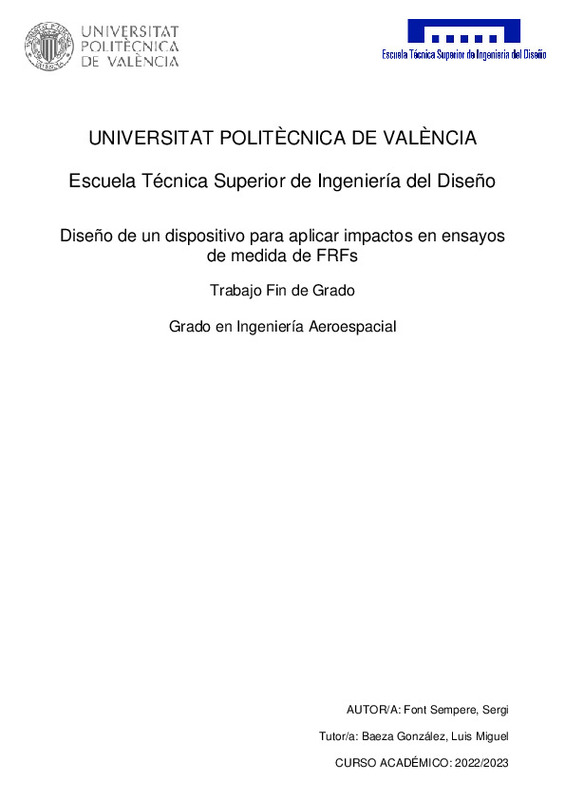|
[ES] Una técnica experimental común en vibraciones es el ensayo con martillo instrumentado. En este experimento se mide simultáneamente la fuerza transmitida por un martillo y la respuesta vibratoria de la estructura. Los ...[+]
[ES] Una técnica experimental común en vibraciones es el ensayo con martillo instrumentado. En este experimento se mide simultáneamente la fuerza transmitida por un martillo y la respuesta vibratoria de la estructura. Los registros experimentales obtenidos se analizan en el dominio de Fourier para obtener las funciones de respuesta en frecuencia (FRF) como el cociente de las transformadas de la respuesta y de la fuerza. Las ventajas de este ensayo incluyen su rapidez, la excitación uniforme de todas las frecuencias (hasta una frecuencia máxima) y la reducción considerable de los problemas de Leakage debido a la naturaleza de las señales tanto de la fuerza como de la excitación. Sin embargo, el principal problema es la incapacidad de controlar los parámetros de la excitación y la dificultad para realizar impactos correctamente, evitando rebotes, que la punta del martillo se quede pegada a la estructura o que se apliquen fuerzas no medidas por el transductor.
Este proyecto tiene como objetivo desarrollar un dispositivo que facilite la aplicación controlada de impactos en el ensayo para medir FRFs. Este dispositivo será útil para medir la receptancia de la vía ferroviaria y calcular el "Track Decay Rate" según EN 15461. El dispositivo permitirá aplicar un impulso seleccionado previamente por el usuario, evitando errores en el ensayo como rebotes o fuerzas tangenciales al plano del impacto.
[-]
[EN] A common experimental technique in vibrations is the instrumented hammer test. In this experiment, simultaneously the force transmitted by a hammer and the vibratory response of the structure are measured. The ...[+]
[EN] A common experimental technique in vibrations is the instrumented hammer test. In this experiment, simultaneously the force transmitted by a hammer and the vibratory response of the structure are measured. The experimental records obtained are analysed in the Fourier domain to obtain the frequency response functions (FRF) as the quotient of the response and force transforms. The advantages of this test include its rapidity, the uniform excitation of all frequencies (up to a maximum frequency) and the considerable reduction of Leakage problems due to the nature of both the force and excitation signals. However, the main problem is the inability to control the excitation parameters and the difficulty to perform impacts correctly, avoiding bouncing, the hammer tip sticking to the structure or the application of forces not measured by the transducer.
This project aims to develop a device that facilitates the controlled application of impacts in the test to measure FRFs. This device will be useful to measure the receptivity of the railway track and calculate the "Track Decay Rate" according to EN 15461. The device will allow the application of an impulse previously selected by the user, avoiding errors in the test such as bounces or forces tangential to the impact plane.
[-]
|







